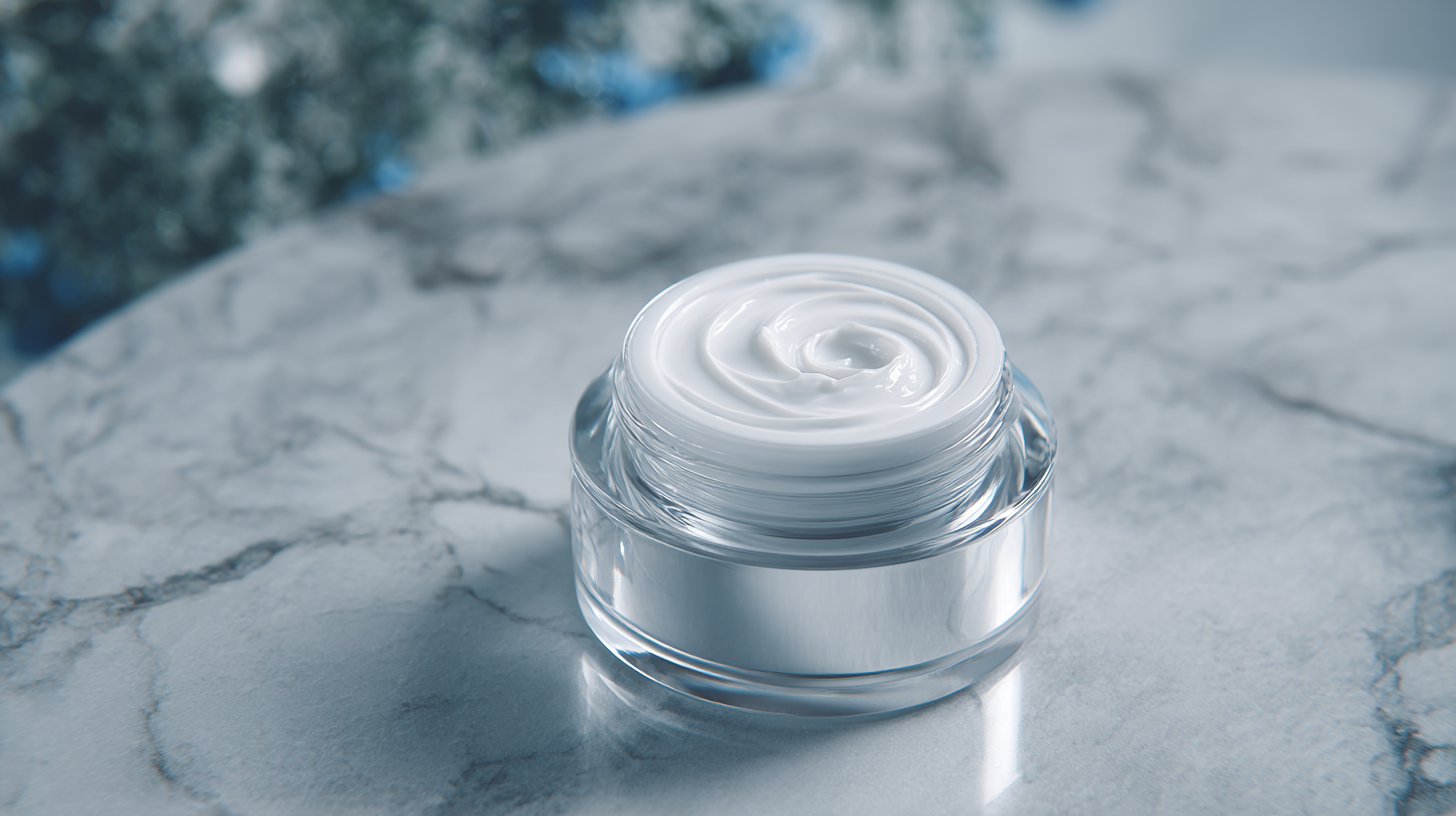
Exploring the Unique Benefits and Uses of Diverse Hyaluronic Acid Products
 Hyaluronic Acid has emerged as a cornerstone in the skincare and medical industries, celebrated for its remarkable hydrating and anti-aging properties. According to a report by Grand View Research, the global hyaluronic acid market is projected to reach approximately $17.1 billion by 2025, growing at a compound annual growth rate (CAGR) of 8.4%. This surge in demand highlights the diverse applications of hyaluronic acid, ranging from cosmetic formulations to injectable therapies.
Hyaluronic Acid has emerged as a cornerstone in the skincare and medical industries, celebrated for its remarkable hydrating and anti-aging properties. According to a report by Grand View Research, the global hyaluronic acid market is projected to reach approximately $17.1 billion by 2025, growing at a compound annual growth rate (CAGR) of 8.4%. This surge in demand highlights the diverse applications of hyaluronic acid, ranging from cosmetic formulations to injectable therapies.
In this ultimate guide, we will delve into the unique benefits and varied uses of hyaluronic acid products, exploring how this powerful ingredient not only enhances skin health but also offers therapeutic advantages in joint and ocular conditions. With an array of formulations available, understanding their distinctions and benefits can help consumers and professionals alike make informed choices in enhancing overall well-being.
Diving into the Hydration Power: Understanding Hyaluronic Acid Types
Hyaluronic acid (HA) is a powerful hydrating agent found in various skincare products, known for its ability to attract and retain moisture. Understanding the different types of hyaluronic acid can help consumers select the right product for their specific needs. There are primarily two forms of hyaluronic acid: high molecular weight (HMW) and low molecular weight (LMW). HMW HA sits on the surface of the skin, providing immediate hydration, while LMW HA penetrates deeper layers, promoting long-lasting moisture retention and improving skin texture.
Beyond their molecular weight, hyaluronic acid products can be categorized by their intended use, such as serums, creams, and supplements. Serums are excellent for delivering purified HA directly to the skin, while creams often combine HA with other nourishing ingredients for enhanced hydration. Additionally, oral hyaluronic acid supplements have gained popularity for their potential to improve skin elasticity and hydration from within, showcasing the versatility of this remarkable compound across different formulations and applications.
Exploring Different Forms of Hyaluronic Acid: Which One is Right for You?
Hyaluronic acid (HA) comes in various forms, each tailored to meet specific skincare needs. The most common types of HA include low molecular weight (LMW) and high molecular weight (HMW) formulations. Research from the Journal of Clinical Aesthetic Dermatology highlights that LMW hyaluronic acid can penetrate deeper into the skin, providing intense hydration and promoting elasticity. In contrast, HMW hyaluronic acid acts as a more effective moisture barrier, ideal for those seeking to enhance skin texture and surface hydration.
For those looking for targeted treatments, topical serums featuring fragmented hyaluronic acid have gained popularity. A report by Research and Markets forecasts that the global hyaluronic acid market will reach $14.6 billion by 2025, driven by the demand for innovative skincare solutions. These fragmented forms are especially beneficial for individuals with sensitive skin or specific concerns, such as fine lines and dryness. By choosing the right form of hyaluronic acid, you can achieve optimal hydration and make significant strides toward healthier, more radiant skin.

Hyaluronic Acid in Skincare: Benefits for Every Skin Type
Hyaluronic Acid (HA) is a powerhouse ingredient that has found its way into countless skincare products, making it essential for every skin type. Known for its remarkable ability to retain moisture, HA can hold up to 1,000 times its weight in water, making it a must-have for those seeking hydration. Whether you have oily, dry, or combination skin, incorporating HA into your routine can improve skin texture and elasticity, giving you a plump, youthful appearance.
Tips: For dry skin, look for serums or creams with higher concentrations of hyaluronic acid to deeply hydrate and lock in moisture. If you have oily or acne-prone skin, opt for lightweight gel formulations that can hydrate without clogging pores. Additionally, combination skin can benefit from using HA in tandem with other active ingredients, such as niacinamide, to balance oil levels while enhancing hydration.
Hyaluronic acid is not just beneficial for facial skincare; it can also be used in body lotions and even eye creams. Its versatility means it caters to various needs across the skincare spectrum. Always apply HA on damp skin for optimal absorption and layer it with a moisturizer to seal in the hydration for a dewy glow throughout the day.
The Role of Hyaluronic Acid in Joint Health and Arthritis Treatment
Hyaluronic acid (HA) has garnered significant attention not only for its cosmetic applications but also for its essential role in joint health and arthritis management. As a naturally occurring substance in the body, HA contributes to the lubrication and cushioning of joints, making it crucial for maintaining mobility and reducing discomfort. In conditions such as osteoarthritis, the concentration of HA in joint fluid decreases, leading to increased friction and pain during movement. Supplementing with HA can help restore the lost volume and improve the overall function of joints, providing relief for those suffering from inflammation and stiffness.
Moreover, various formulations of hyaluronic acid, including injectables and oral supplements, offer targeted benefits for arthritis patients. Injections directly into the joints can provide localized relief, reducing pain and improving function for several months. On the other hand, oral HA supplements can support joint health from within, promoting moisture retention and cartilage health over time. As research continues to unfold, the potential of hyaluronic acid as a therapeutic option for arthritis not only underscores its importance in joint health but also highlights the need for individuals to explore these innovative solutions for better quality of life.
Innovative Uses of Hyaluronic Acid Beyond Beauty: A Look at Medical Applications
Hyaluronic acid, traditionally celebrated for its role in skincare, is making waves in the medical field with innovative applications that go beyond the beauty industry. One of the most significant uses of hyaluronic acid is in orthopedics, particularly in joint injections for patients with osteoarthritis. These injections help to lubricate the joints, providing relief from pain and improving mobility by restoring the natural viscosity of synovial fluid. This non-surgical treatment option allows many individuals to manage their symptoms effectively, extending their ability to engage in daily activities without discomfort.
Additionally, hyaluronic acid is gaining traction in wound healing and tissue regeneration. Its natural properties make it an ideal candidate for treating burns and chronic wounds, as it aids in moisture retention and promotes faster healing. Researchers are also exploring its potential in regenerative medicine, where it could facilitate cell migration and proliferation, essential for the recovery of damaged tissues. These advancements illustrate how hyaluronic acid's versatility extends well beyond aesthetics, offering promising solutions in medical therapies that can enhance the quality of life for many individuals.

